|
This is part 3 in a series about not using your home as a storage unit. In part 1, we discussed how your home should be for living; it should be filled with items that you use now and enjoy having around. In part 2, we reflected on whether or not we were storing any items for non-household members and what our motivations were behind those decisions. If feelings of resentment surface, this is a sign that it may be time to make some changes. In part 3, we will discuss how to set boundaries with those non-household members.
Let’s say that you have decided that you have some items in your home that you are no longer interested in storing.
Before you begin this conversation, you will need to reflect on a few things first. Are you close to this person? Do you already know what their motivation was for leaving their belongings with you? What reactions or arguments can you expect back from them? Where are they physically located and how easy will it be for them to take back their belongings? 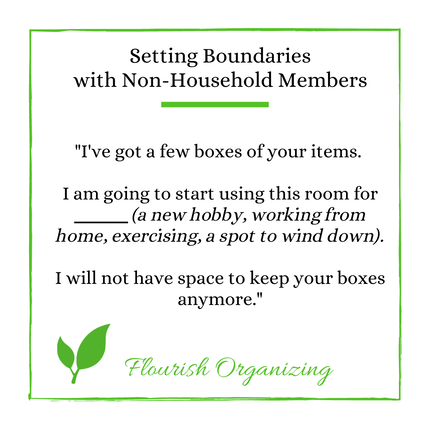 A conversation might start like this: “I’ve got a few boxes of your items. I am going to start using this room for _______ (a new hobby, working from home, exercising, a spot to wind down, etc.), and I will not have space to keep your boxes anymore.” Be kind, and be clear. Keep emotions out of it: this is not a good time to be angry, sarcastic, or accusatory. Pre-plan what you are going to say and do so calmly. Assuming that these are friends or family and that you have a good relationship with them, feel free to include your plans for the space and your feelings about them. These people care about you and want to support you: “I love you, and at the same time, I won’t be able to keep your furniture anymore.” If, however, this is someone with whom you have a rocky relationship or you are not close to, you don’t need to give reasons. Keep it short and simple: “I’ve got a few boxes of your items, and I will no longer have space for them.” The second part of this conversation is to create a plan. With a close relationship, you can just ask them what they want you to do with the items: they can pick them up, you can drop them off, you can mail them, etc. Since these are someone else’s items, avoid doing something permanent with the items yourself. It is better to have them donate the items themselves than for you to do it for them. It is quite easy to end up in sticky situations where you are blamed for getting rid of things. Also, they are the other person’s belongings, so they should therefore be responsible for taking care of them. This is a key point in the KonMari Method™: take care of your own belongings; don't throw out other people's things.
Please reach out if you would like someone to help walk through this journey with you. It can be extremely helpful to have an outsider to coach and support you along the way. Virtual coaching is available to help you work through your decluttering goals and challenges. You may also enjoy:
Comments are closed.
|
AuthorMy name is Laura, and I love all things organizing! Categories
All
|
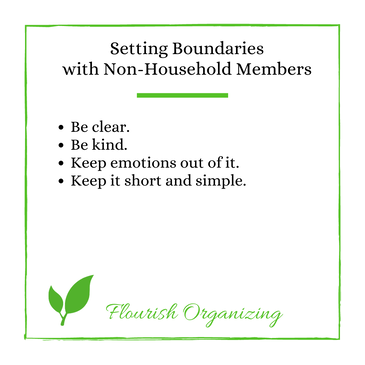
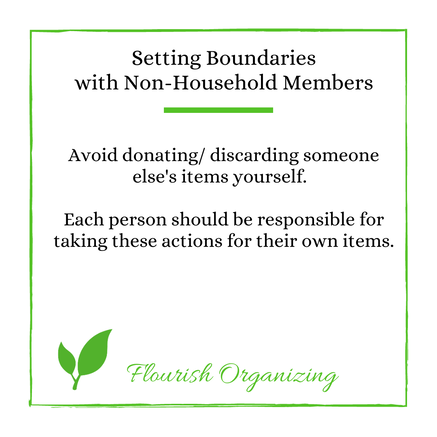
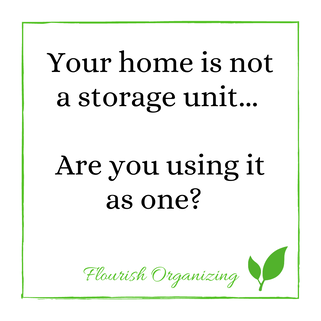
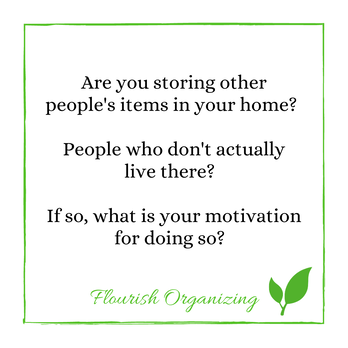
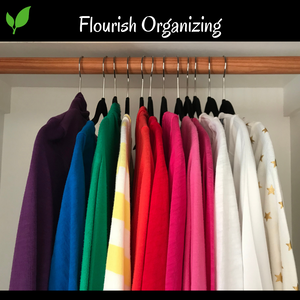
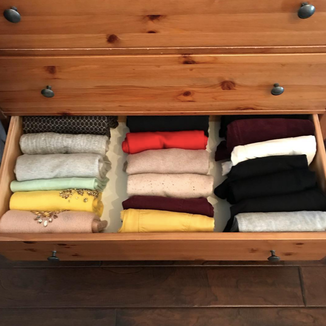
 RSS Feed
RSS Feed
